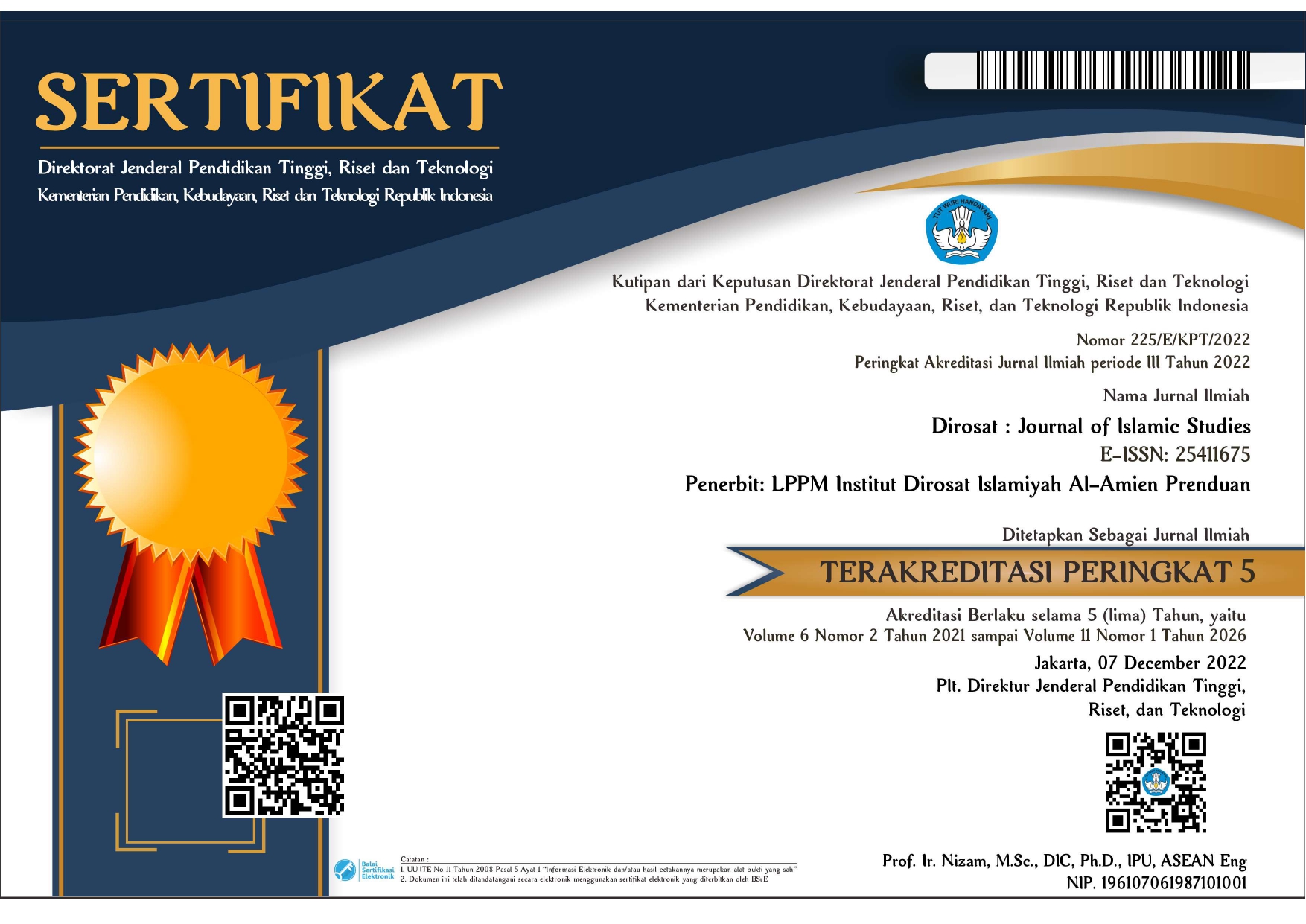Tipologi Kodifikasi Hadis-Hadis Nabi Muhammad Saw
Abstract
Given his position and urgency in religion, the hadiths of the Prophet continued to be guarded by Muslims, so that in the first century of the Hijriyah there was a big idea from the caliph Umar bin Abdul Aziz to collect the hadiths of the Prophet. The Caliph's suggestion was immediately accepted by the scholars, so since then efforts to compile and codify hadith have been carried out. With the support from the government and the sincerity of the scholars in safeguarding this second source of Islamic teachings, the collection of hadiths went well, even in the second, third and fourth centuries of the Hijriyah there was a large-scale codification of hadiths carried out by great hadith scholars. With different typologies in codifying the hadiths of the Prophet, hundreds of thousands of hadiths of the prophet with their sanads were successfully preserved by the scholars in book form. So since then, hadith scholars have focused more on studying hadith through existing hadith books, because hadith books which were codified in the second, third and fourth centuries became the main books of hadith. However, the problem for the novice generation in hadith studies is how to study and trace hadith through these main books, bearing in mind the different typologies of writing. But for those who know the typology, it will be easy to find out the collections that are compiled in one main hadith book. The typologies of the hadith books are, 1) al-Jawámi' which is arranged based on religious themes, 2) as-sunan, al-muwattaha' and mushannaf which are arranged based on fiqh themes, 3) al-masanid which is arranged based on the narrators of the companions and the hadiths collected in one group without classifying the themes, 4) al-ma'ajim compiled based on the musnad of the companions or compiled based on the names of the codifying teachers, based on hijaiyah letter order.
Â
Keywords
References
Abdussalam, Abu Abdurrahman. Dlarurah Al-Ihtimam Bi As-Sunan An-Nabawiyah. Riyad: Dar Al-Manar, 1414.
Abu Syuhbah, Muhammad bin Muhammad. Al-Wasit Fi Ulum Wa Musthalah Al-Hadis. t.tp: Dar Al-Fikr Al-Arabi, n.d.
Al-Hasani, Muhammad bin Alawi. Al-Manhal Al-Lathif, 1421.
Al-Khatib, Muhammad Ujjaj. As-Sunnah Qabl At-Tadwin. Bairut: Dar Al-Fikr, 1980.
Al-Kuttani, Muhammad bin Ja’far. Ar-Risalah Al-Mustatrafah Li Bayan Masyhur Kutub As-Sunnah Al-Mushannafah. Bairut: Dar Al-Basya’ir Al-Islamiyah, 1986.
Al-Qattan, Manna’. Mabahits Fi ‘Ulum Al-Hadits. Kairo: Maktabah Wahbah, 2007.
An-Nuaimi, Abu Hafs Mahmud bin Ahmad Tahhan. Taysir Musthalah Al-Hadis. t.tp: Maktabah Al-Ma’Ärif, 2004.
As-Shalih, Subhi Ibrahim. Ulum Al-Hadis Wa Musthalahuh: Ard Wa Dirasah. Bairut: Dar Al-Ilmi, 1984.
As-Sijistani, Abu Daud Sulaiman bin Asy’ats. Sunan Abi Daud, Juz 3. Bairut: Al-Maktabah Al-’Ashriyah, n.d.
Hasyim, Abd al-Majid. Ushul Al-Hadits Al-Nabawi. Kairo: Dar Al-Syabab li At-Thiba’ah, 1986.
Mazid, Ali Abdul Basit. Minhaj Al-Muhadditsin Fi Al-Qarn Al-Awwal Al-Hijri Wa Hatta ‘Asrina Al-Hadlir. Al-Haiah Al-Misyriyah Al-Ammah li Al-Kitab, n.d.
Muhdlar, Atabik Ali dan Ahmad Zuhdi. Kamus Kontemporer Arab-Indonesia. Krapyak: Multi Karya Grafika, n.d.
Zahu, Muhammad Muhammad Abu. Al-Hadis Wa Al-Muhadditsun. Kairo: Dar Al-Fikr Al-Arabi, 1378.
DOI: 10.28944/dirosat.v5i1.923
Refbacks
- There are currently no refbacks.

This work is licensed under a Creative Commons Attribution-NonCommercial-ShareAlike 4.0 International License.








